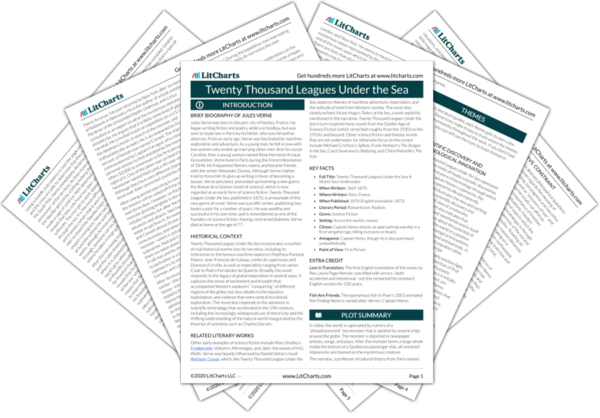Previous
Part 1, Chapter 14
|
Previous
Part 1, Chapter 14
|
Twenty Thousand Leagues Under the Sea: Part 1, Chapter 15 Summary & Analysis |
Next
Part 1, Chapter 16
|


Upgrade to unlock the analysis and theme tracking for all of Twenty Thousand Leagues Under the SeaTwenty Thousand Leagues Under the Sea!
Get LitCharts A+